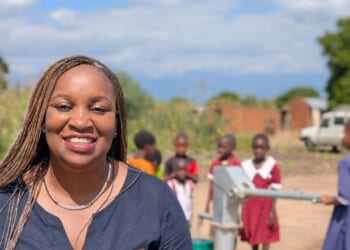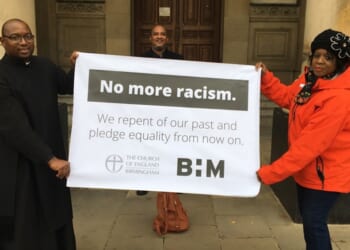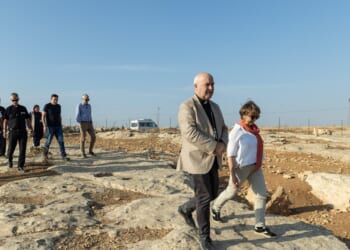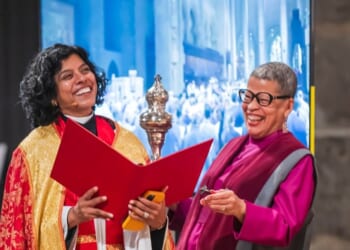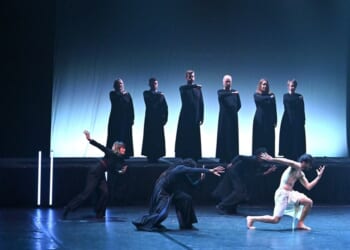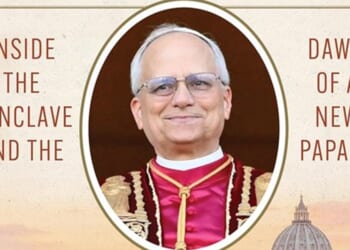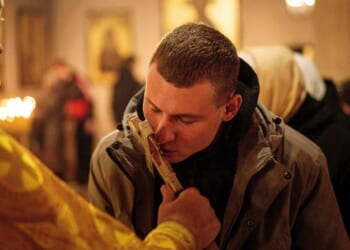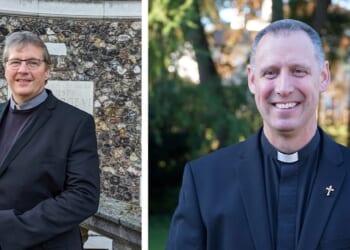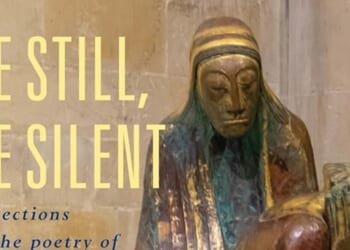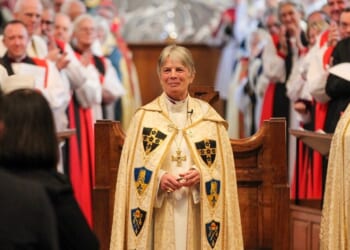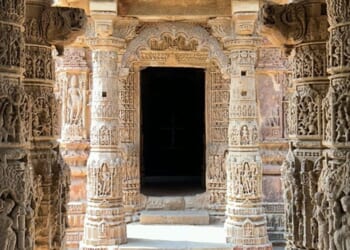Out of the depths
I FINISH the third draft of my novel, close my laptop, and run down to the sea. I need to dissolve into water for a bit. The waves, unusually for the English Channel, are up and at us, crashing on the shore, sliding up the shingle, hissing as they pull back and up to pound the beach again and again; and we take no risks with this great green monster, but let it play with us, lifting us and dropping, and we laugh out aloud, children once more.
Then the challenge of getting out — and I choose exactly the wrong moment, as the wave catches me and drags me back and tumbles me over, not wanting to let me go; but, with the grasp of my friend’s hand, steady, unfailing, I find my feet, and the sea relinquishes me. I am laughing still, but shakily.
The sea is a metaphor of eternity, one that I can swim in. I think of Jesus as the edge of the sea, the place where we can dive in and taste its magnitude and power. He makes it possible. Only take no liberties; for I am almost nothing in its immensity.
Immersive storytelling
I MAKE a research trip to St Martin’s, Canterbury, a chapel originally built in the sixth century for the character of my novel, the Frankish Queen Berhta. I retread the path that she might have taken from the villa regalis, which would have been somewhere to the east of where the cathedral now stands, skirting The King’s School, through the ruins of St Augustine’s Abbey (which wouldn’t have been there, either), around the university car park, and up to the little church on the hill, where, 14 centuries later, congregations still worship.
Did Berhta hear the same birdsong as I can? Did the wind rustle the leaves of the same trees? did the hill rise in just this way? and where did the stream that now emerges from a pipe into the road have its source in her day?
So little is known of this woman who made Augustine welcome when he arrived on the Isle of Thanet in 597. So much is known of the man whose mission she made possible. How do I tell her story? I am encouraged by Radio 4’s Start the Week, on which Arundhati Roy, Lea Ypi, and Sarah Howe talk to Tom Sutcliffe about using creative imagination to tell women’s stories when history is almost silent.
How else do we make them known? We who dare to write of their interior lives must rely on human nature to be not so different across time and place; and I enter fully into the spirit of this brave and lonely young woman walking through pagan Kent to her little church.
The day is hard work, and I am too tired to do more than look out of the train window on my return journey. I soak up a landscape whose contours may resemble those that it had in Berhta’s day. John Gray, in his book Straw Dogs, berates humans for interfering too much with our world. Can we not be content, he asks, simply to see?
Cold collation
THE collation of the Revd Mathew Phipps, the new Rector of Hastings Old Town. Why a platter of cold meat? Because the parish patron is the diocesan Bishop, I’m told, leaving me not much the wiser. A joyful service and a serious one, led by the Bishop of Lewes, the Rt Revd Will Hazlewood, accompanied by an array of supporting clergy. We sing the hymns lustily, and do ourselves proud.
I miss this. I am more generally to be found at St Mary Star of the Sea, the Roman Catholic church in the high street, keeping my beloved company, where we are diffident about our singing. Roman Catholic masses, especially in Ireland, invite the highest degree of reticence. Do not stick out, whatever you do. Don’t show off. So the readings are ho-hum, and the mass is workaday. But I have learned to love its modesty and unshowy devotion.
What matters is that we simply show up; the sacrament works, whatever state we’re in. Much as I love our polished Anglican liturgy and accomplished sermons, they can by contrast feel a bit . . . all about us.
Centre of attention
MY BEST prayer is contemplative. I join an online community, early each weekday morning (cameras off!), for half an hour; a Taizé chant is played at the beginning and end of our shared silence.
I once heard an analogy that helps this kind of apophatic prayer: imagine you have entered a room where a party is in full swing, and many people’s voices are clamouring for your attention. You are pulled this way and that — and then you see your beloved in the middle of the room, and the voices die away, and so does their pull; for you have eyes only for him.
The party is my mind; the clamouring people are my thoughts; the beloved is God.
Vicarious identity
MY OWN beloved spouse is knocked sideways by, we think, the antibiotics that he has been on for the past year, in an attempt to rid his body of underlying tuberculosis — the lurking kind, not the infectious kind (no, I don’t understand either).
So fatigued is he that we have to succumb to assistance at the airport. I am the learner driver of a wheelchair. My apologies to all those barked shins and clipped chair legs, and to Seán’s feet, which protrude and bump into the wall of the lift as I fail to realise where it and he stop.
But the staff and crew couldn’t be nicer, and I realise how strained I have become, watching Seán suffer. How the lover suffers to see their loved one’s suffering, watching and praying and pushing wheelchairs, but powerless to take away the pain. . .
Fountain of life
WE ARE settled in our Irish retreat. The thousand or so trees that we have planted are doing wonderfully well (apart from the ash), but aren’t enough to justify the number of flights that we take to reach it, in the tucked-away Kerry village of Knockanure.
We are in Seán’s ancestral hovel, one of thousands of cottages built by the British to keep the Irish pacific at the end of the 19th century. A cottage and an acre — an Irish acre, which is two-and-a-half English acres: enough land to keep a family fed with hens, a cow perhaps, a pig, a growing garden, and an orchard. Bertrand Russell said that we should beware the lure of allotments; for they keep us tied to the land and kill our rebellious spirit.
Moore’s Cottage had no running water or electricity. Now, we have three bathrooms, and it has become a blessed place to write. North Kerry was, and remains, a crucible of great Irish writers: Brendan Kennelly, John B. Keane, Bryan MacMahon, Maurice Walsh, and George Fitzmaurice, whose son Gabriel is himself a poet and still lives just down the road from us.
I channel their spirit, and feel a wild creativity come upon me. Like the wild sea, like the wild parties in my meditating mind: at their heart, God.
Dr Claire Gilbert’s novel on Berhta will be published by Hodder Faith.


